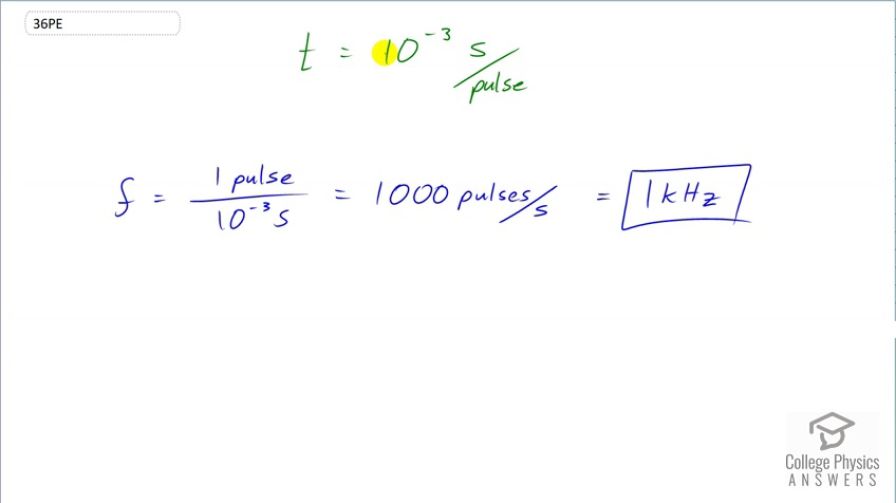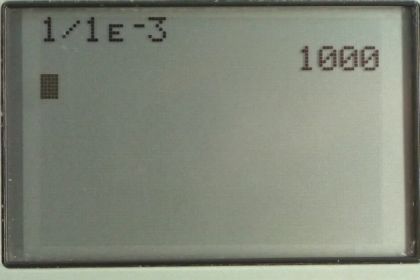Question
Assuming one nerve impulse must end before another can begin, what is the maximum firing rate of a nerve in impulses per second?
Final Answer
Solution video
OpenStax College Physics, Chapter 1, Problem 36 (Problems & Exercises)

vote with a rating of
votes with an average rating of
.
Calculator Screenshots
Video Transcript
This is College Physics Answers with Shaun Dychko. We want to know the maximum rate that nerves can carry impulses. So a single impulse takes 10 to the minus 3 seconds so it's 10 to the minus 3 seconds per pulse and we are told that this total time has to elapse before the next pulse can begin so that means each pulse is gonna take this full amount of time. And so the frequency then is gonna have units of pulse per second and so we take the reciprocal of this time, in other words. And so we have 1 pulse for every 10 to the minus 3 seconds which gives us 1000 pulses per second and how many significant figures should this have... well, there's one significant figure in this time because when you see 10 to the minus 3, you can think of it as 1 times 10 to the minus 3 and so there should be one significant figure in our frequency. So we'll write this as 1 kilohertz and the prefix kilo means times 10 to the 3 because this is 1 times 10 to the 3 pulses per second and this can be abbreviated with the units of 'hertz' and there we go—1 kilohertz.
